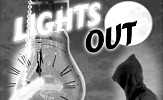
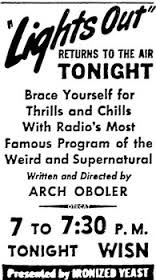 Lights Out! (1934-1947) aired “Money, Money, Money” on August 5, 1936 as its 9th episode. This is our 18th Lights Out! episode since this feature was added to our website in June of 2009 and the first since September of 2016, just short of five years ago. Since that last episode, where much background material was put forth about the series’ history, as well as behind the scenes anecdotes concerning the program’s wild popularity, we felt it was time to repeat this back story for newcomers, and follow up with comments about this current episode.
Lights Out! (1934-1947) aired “Money, Money, Money” on August 5, 1936 as its 9th episode. This is our 18th Lights Out! episode since this feature was added to our website in June of 2009 and the first since September of 2016, just short of five years ago. Since that last episode, where much background material was put forth about the series’ history, as well as behind the scenes anecdotes concerning the program’s wild popularity, we felt it was time to repeat this back story for newcomers, and follow up with comments about this current episode.
The original iteration of Lights Out! ran from 1934-39, producing some 274 original scripts (of which only around 140 are believed to still exist), though it was revived for short periods of time–using many recycled or updated scripts from the 1930s–off and on until 1947. The show was created by Willis (aka Wyllis) Cooper who, the story goes, after a hard day’s work and tired of listening to the same old late night radio dance band programs, decided to write his own supernatural and horror stories for his own amusement (though he frightened himself so much that sometimes he couldn’t finish his own stories until the next morning). A fan of mystery and horror stories (he was especially frightened of ghost stories), he eventually convinced a local Chicago radio station (an NBC affiliate) to produce Lights Out! using his own material, and which would air at midnight, far past the bedtime for impressionable children. After the show had run for maybe a year it was announced without fanfare that the show was at an end, whereupon the radio station was deluged with irate fans from around the country demanding the show continue. Bowing to the pressure, the program was quickly revived and within three weeks Lights Out! once again was scaring the pants off of its ever-growing cult-like audience. It became so popular that fan clubs sprang up all over the country and numbered around 600 by mid-1936. Small to large groups of fans would gather at a host’s house and play cards or listen to the radio for hours ahead of the show’s midnight airing, for it was the early 1930s episodes that made it one of the most talked about horror shows of all time, notably for its gruesome sound effects and grisly scenes of murder (dismembered bodies, bodies dissolved to bones in acid baths, etc.).
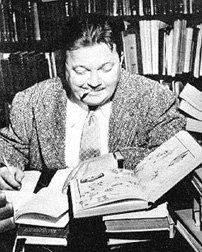
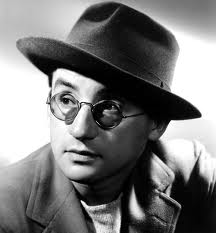 Even the cast and crew became so involved in the plays they were reading or producing that as the programs began all lights in the studio were turned off, except for the pin lights needed for the reading of the scripts or those needed by the equipment technicians. Cooper (1899-1955, photo at left) was at the helm from the show’s inception in 1934 through mid-1936, at which point he would venture to Hollywood to work on films (most notably the script for the mediocre 1939 Son of Frankenstein). From 1936 on, the wunderkind Arch Oboler (1909-1987, photo at right) would, with rare exceptions, write all of the show’s scripts, sometimes borrowing or adapting stories from his other radio shows, a few with a much more social or political message (Oboler was a staunch anti-Nazi)–though retaining the much-loved supernatural or horror element.
Even the cast and crew became so involved in the plays they were reading or producing that as the programs began all lights in the studio were turned off, except for the pin lights needed for the reading of the scripts or those needed by the equipment technicians. Cooper (1899-1955, photo at left) was at the helm from the show’s inception in 1934 through mid-1936, at which point he would venture to Hollywood to work on films (most notably the script for the mediocre 1939 Son of Frankenstein). From 1936 on, the wunderkind Arch Oboler (1909-1987, photo at right) would, with rare exceptions, write all of the show’s scripts, sometimes borrowing or adapting stories from his other radio shows, a few with a much more social or political message (Oboler was a staunch anti-Nazi)–though retaining the much-loved supernatural or horror element.
“Money, Money, Money” in one sense is a typical Arch Oboler script, in that it has a moral at the heart of it all, though this time not an anti-Nazi (Hitler was on the rise in Germany at this time) or otherwise political screed as he was fond of writing given the opportunity. No, “Money, Money, Money” relates the story of two men who both covet money though for entirely different reasons, and the depths to which even an otherwise good and honest man would go to forsake his principles for his family should he come into a substantial sum. It does not end well, and while an old lesson it is still worth heeding as one man discovers the hard way. What amount of money would it take for the average man or woman to disregard a strongly held ethical principle they have lived their entire life by? How much for any of us? Does everyone, as the saying goes, have a price?
Play Time: 29:45
{This episode of Lights Out! aired on a Wednesday evening in August of 1936, perfect for the neighborhood gang, for there was plenty of summer vacation remaining and a trip to the local newsstand the next morning would be a great way to start their day. Astounding Stories (1930-present, now Analog) was still very much a product of the early pulp era in SF and a few years before John W. Campbell would become its editor and usher in what many believe was the Golden Age of SF. It was a monthly in 1936. Thrilling Wonder Stories (1936-55) was the end result of Hugo Gernsback starting several magazines in 1929, merging them in 1930 (Science Wonder Stories/Air Wonder Stories, both 1929-30, then combined as simply Wonder Stories [June 1930-Mar/Apr 1936]). When Wonder Stories published its final issue in the Spring of 1936 it was sold to Standard Magazines, and with a slightly revised title published its first issue in late Summer as Thrilling Wonder Stories, which was now scheduled as a bi-monthly with the issue you see below. Weird Tales (1923-54), the “unique” magazine, held sway over the supernatural branch of the fantastic fiction tree and was a must buy, publishing many future classics of fantasy and horror by some of the biggest and most highly regarded names in the field. While the issue below is cover dated as August, in reality it was a one-off August/September issue, though the magazine was a solid monthly enterprise (except for one or two brief interludes) from 1923 through 1939, at which point in January of 1940 it became a quarterly until its demise.}
[Left: Astounding, Aug. 1936 – Center: Thrilling Wonder, Aug. 1936 – Right: Weird Tales, Aug/Sept 1936]
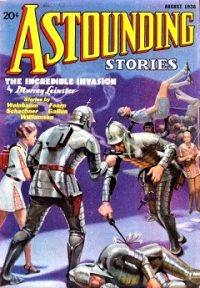
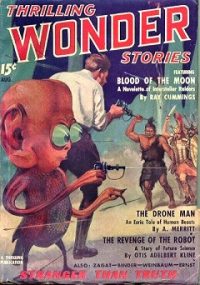
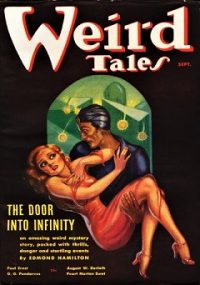
To view the entire list of weekly Old Time Radio episodes at Tangent Online, click here.